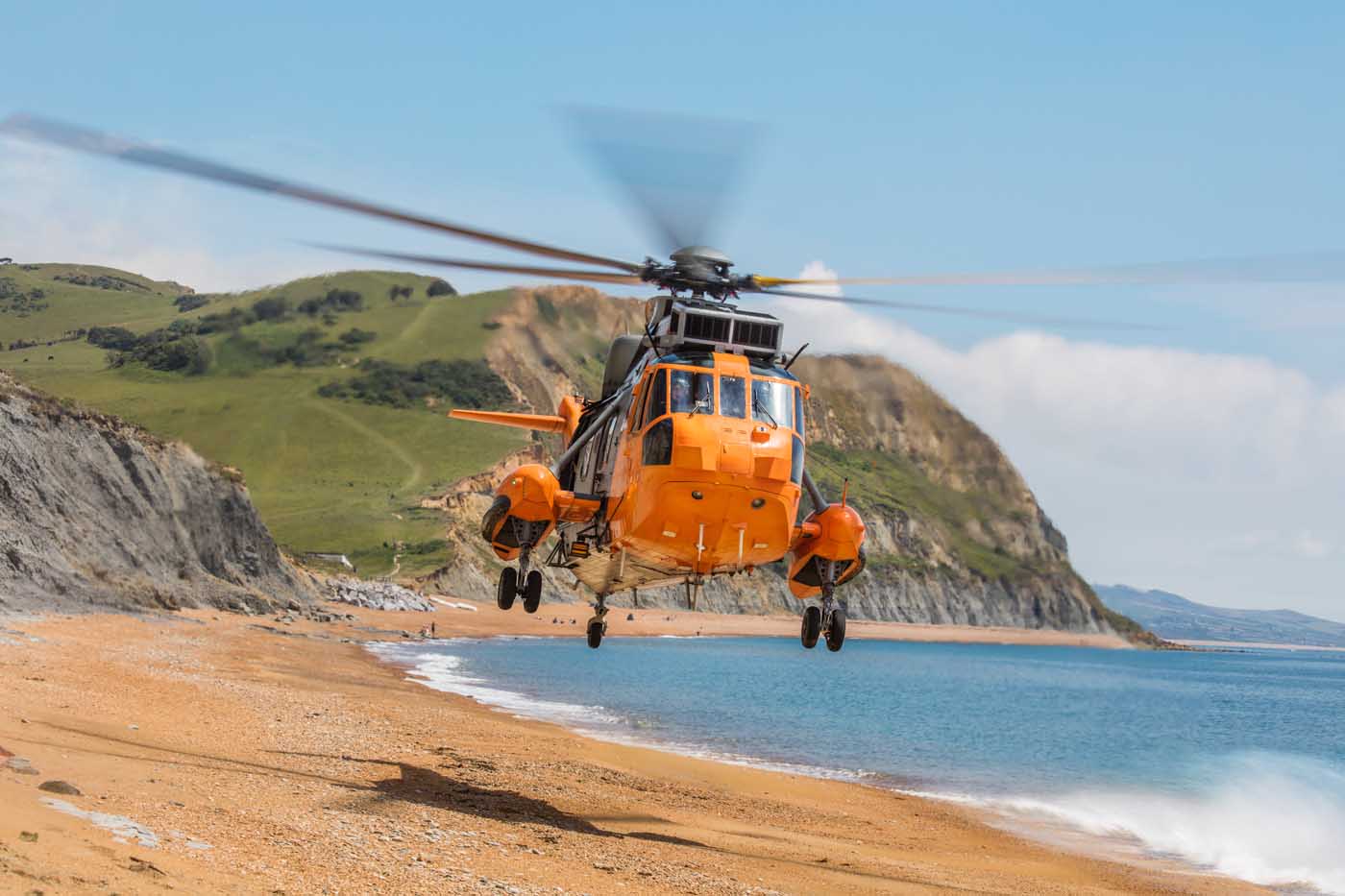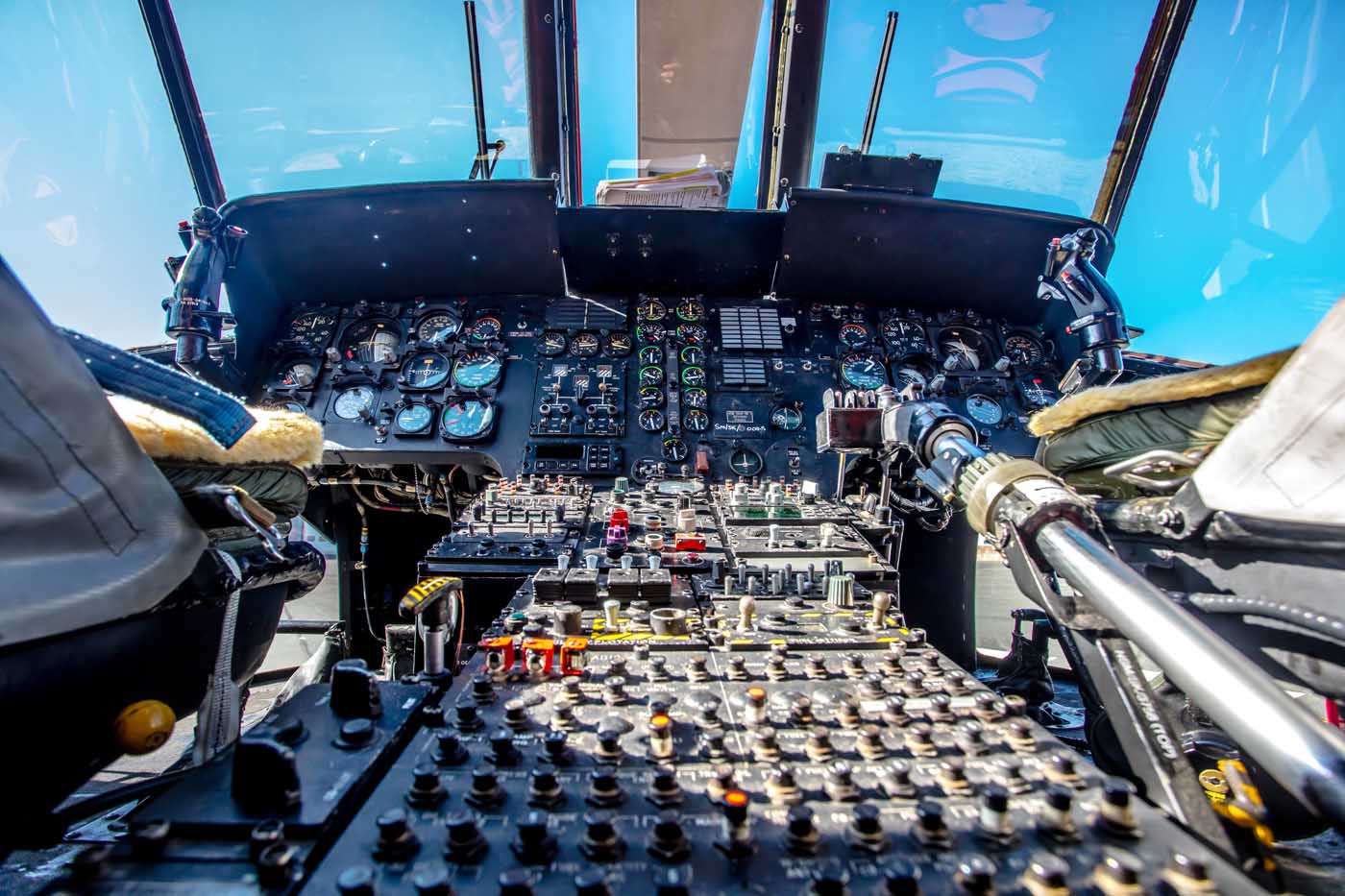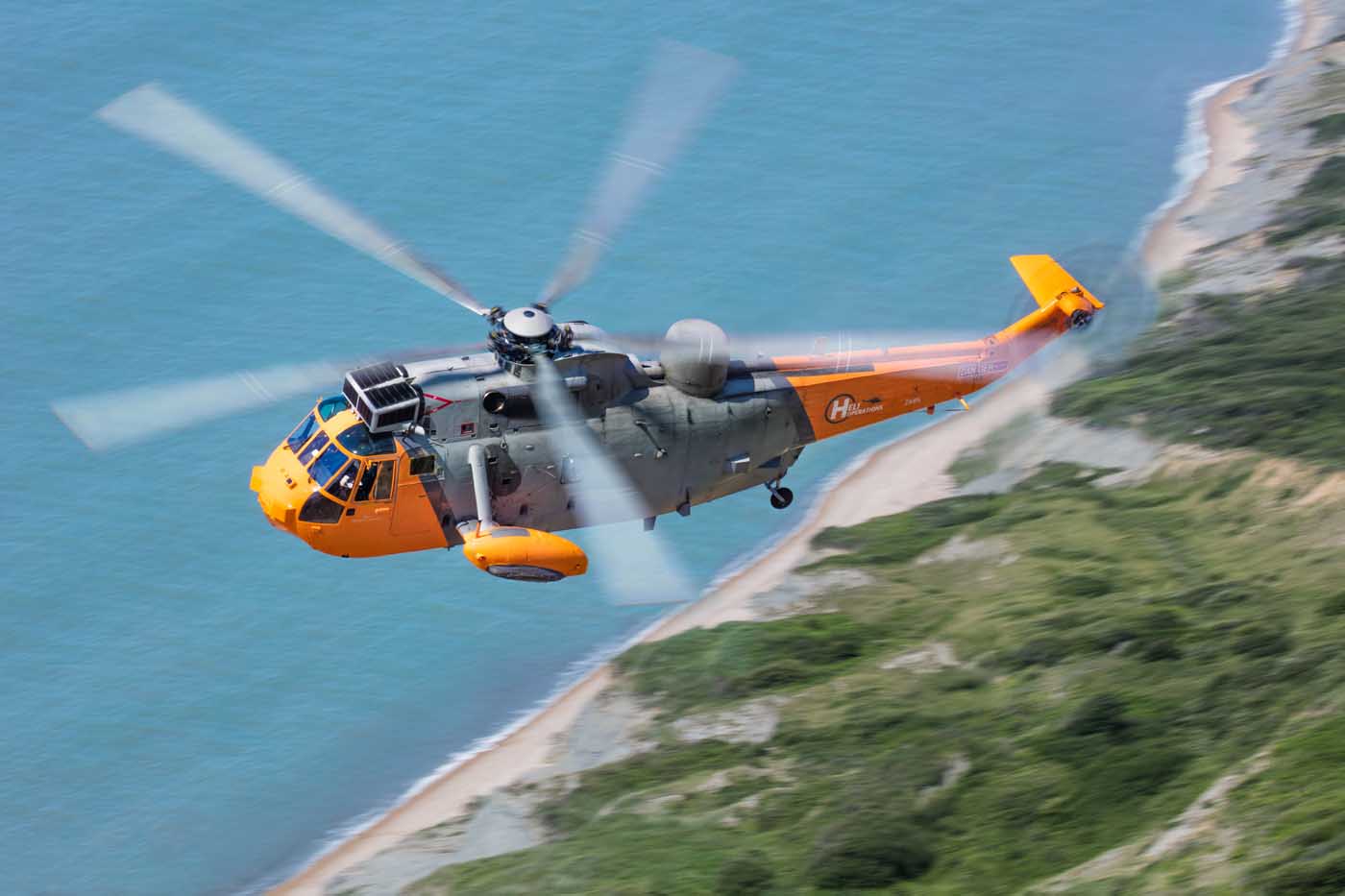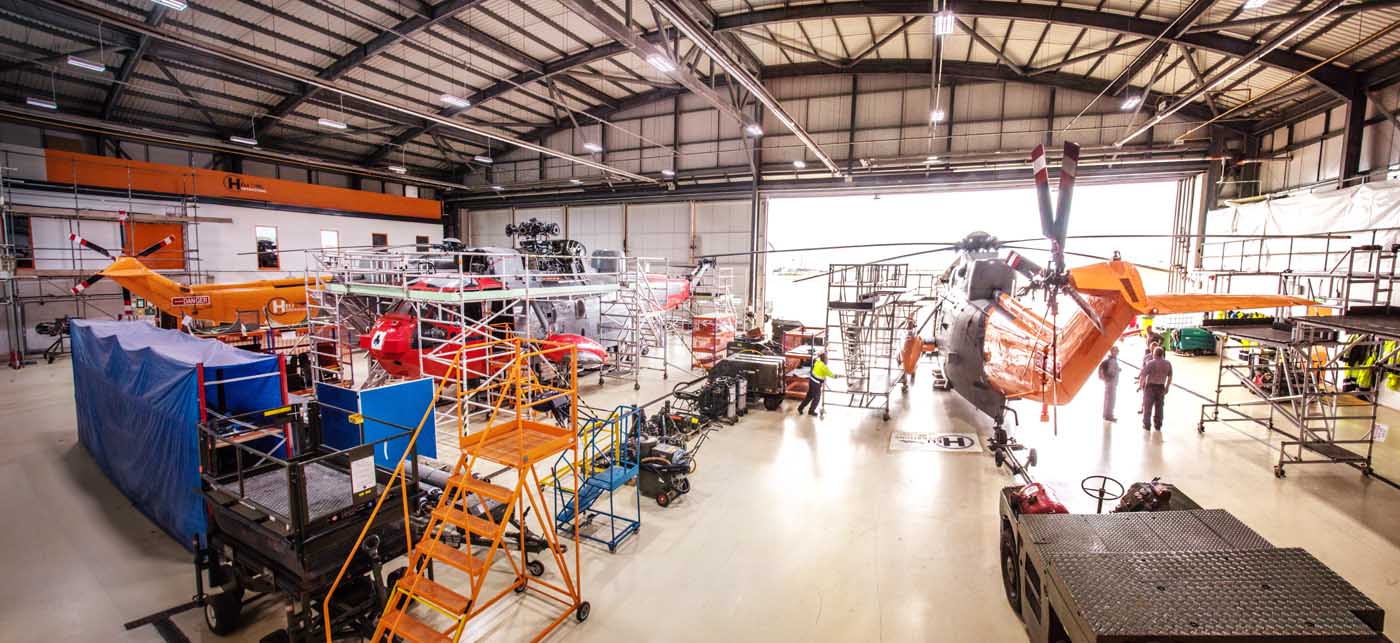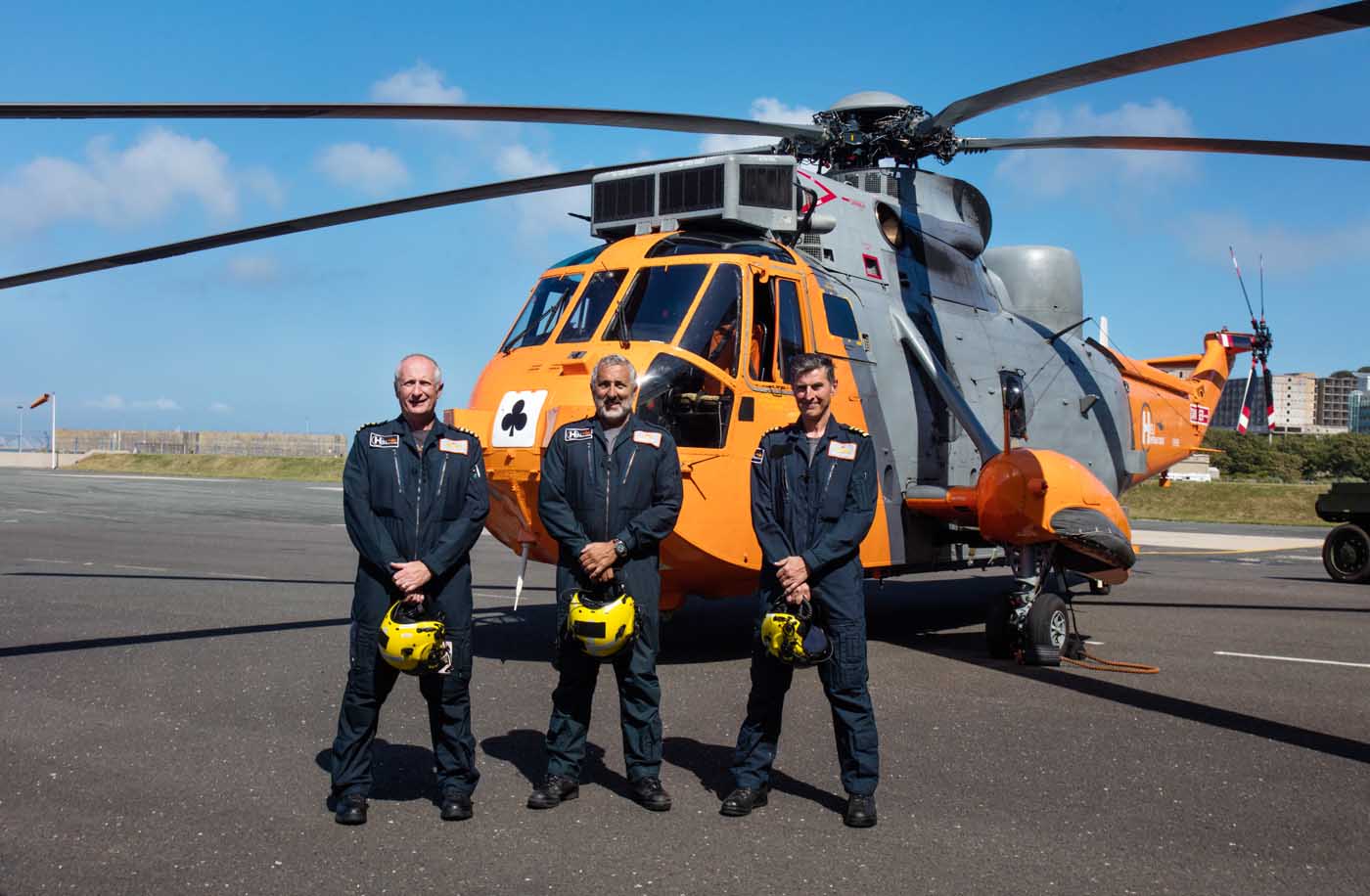HeliOperations — better known as HeliOps — is a leading U.K.-based helicopter operating company specializing in search-and-rescue (SAR) training, the provision of aircrew, and other specialist aviation services. It operates Westland (now Leonardo) Sea King Helicopter Utility (HU) Mk5 helicopters, immediately recognizable by their distinctive orange-and-gray liveries.
These former Royal Navy SAR aircraft were operated by 771 and 819 Naval Air Squadrons (NAS) based in Cornwall and Prestwick until their retirement from Ministry of Defence service in April 2016. Now flown from HeliOps’ base at the former Royal Naval Air Station (RNAS) Portland in Dorset, the helicopters are used to provide SAR training principally to the German Navy, which operates the Mk41 variant of the Sea King.
HeliOps CEO Steve Gladston is a former Royal Navy anti-submarine and SAR pilot. After leaving the service, he flew Sikorsky S-61 and S-92 helicopters in support of oil-and-gas operations and civilian SAR in both the U.K. and Ireland. In 2007, Gladston founded Developing Assets (U.K.) Ltd, HeliOps’ parent company, from which the current operations have grown.
John Bentley, HeliOps’ flight operations manager and chief pilot, has been a commercial helicopter pilot for 28 years. He has served as a front-line SAR pilot for over 21 years, including 10 years as the chief pilot of Bristow’s Stornoway SAR base. He has additional experience in oil-and-gas, military support, and United Nations support operations.

Together, Gladston and Bentley transitioned Irish SAR operations from the S-61 to the S-92, a very significant change. As Gladston explained, “When the Irish SAR needed to transition to the S-92, we built a team together of all ex-Navy Sea King, SAR-experienced personnel including pilots, rear crew, and others. We then supplied the four Irish bases with aircrew, including the chief pilot role, allowing a seamless handover that maintained provision over a three-year period covering about [7,500] shifts.”
HeliOps has also supplied both pilots and rear crew to a number of existing SAR bases in the U.K., including its current home in Portland. After the U.K. government decided in 2015 to end Maritime and Coastguard Agency (MCA) SAR operations from Portland, HeliOps provided contractor aircrew to ensure continuity before the planned closure in June 2017.
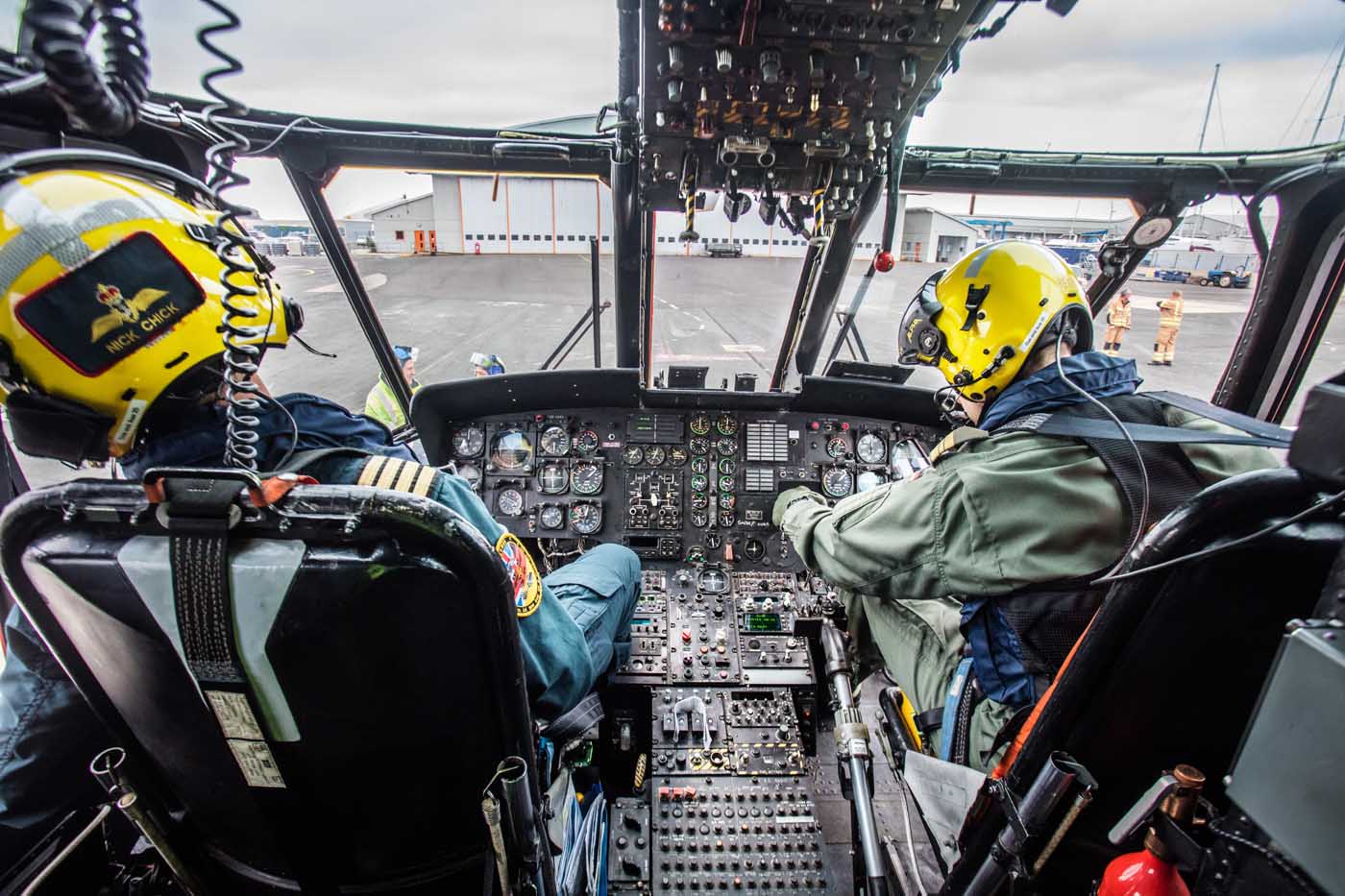
In parallel, HeliOps sought to purchase the Portland site from the U.K. government with the intention of retaining a helicopter operating base capable of providing support to the MCA if required. The capital to do so came from a well-timed German Navy contract.
“We were looking for contracts and found the German Navy needing some Sea King training. I was Sea King experienced and I knew I could get people,” Gladston recalled.
“We juggled it and spun the plates and it all came right in the end,” he continued. “In September 2017, when we flew our first sortie in a Sea King Mk5 in HeliOps livery to train the German Navy, it was a hugely important step in our development and a very exciting time.”
The base is at Osprey Quay on Portland in Dorset, on the land formerly operated by the Royal Navy as the anti-submarine training establishment HMS Osprey. The area has been in continuous use supporting helicopter operations for over 60 years.
HeliOps initially leased its Sea King aircraft but has now purchased them together with a significant package of spares and support equipment, along with a simulator still located at Royal Naval Air Station Culdrose in Cornwall. As well as supporting the German Navy contract, the simulator has been used to train pilots from other Sea King operators including Norway, Pakistan, and the U.K.
The two Sea King aircraft flying today are HU Mk5 models, including XV666, an aircraft that first flew in 1970 as a Mk1 and has been upgraded several times since.
“We have bought all the remaining six Mk5s, five ex-RAF [Royal Air Force] Mk3s and seven AEW [airborne early warning] Mk7s with a view to eventually flying or cannibalizing them for spares,” Gladston said. “Most are currently stored at HMS Sultan, shortly to move to their own newly acquired base maintenance and storage facility at Somerton in Somerset.” Boasting over 3,000 square meters (32,200 square feet) of maintenance, storage, and office space, the facility is just five miles from RNAS Yeovilton and only 35 miles (55 kilometers) from Portland.

Flexible training
Andy Tillion is HeliOps’ senior pilot, while Nick Chick leads crew training. They are providing pilot training for the Germans at the moment and have trained winch personnel as well.
“The caliber of students who come here is high,” Tillion said between flights. “As would be expected, we have had a few challenges with the students, [but] we have been able to resolve them and deliver a very good product back to the German Navy.”
He elaborated: “It’s certainly the additional training that we provide here that adds to the German training; there is enough flexibility that we can give to focus on a particular individual’s training needs. It’s one of the biggest advantages of this sort of arrangement. Normally in a military training pipeline you are restricted on budgets — they can only allocate a certain amount of flights to a particular element [of] the training course and if they’re not achieving the required standards. We are able to be more flexible and ensure we achieve the very highest standards.”
For example, Tillion said, “On the first course we had a student that was struggling with a number of aspects but by the end of it he achieved a good standard and I’d be surprised if he runs into any problems back in Germany. You get an element of satisfaction, especially when you see where they start and where they end up. There was one pilot who was quite reserved and under-confident when he first came here, but the last few sorties I did with him I said, ‘You’re a different person.'”
Chick said there currently are two students who have returned for advanced training, having attended the earlier courses with HeliOps. “It’s good to see them coming back for further training,” he noted.
The students’ initial training is in an aircraft with a glass cockpit, so there is a certain amount of resetting done at HeliOps. But the training they receive on the analog Sea King is applicable for all types. Tillion and Chick have both flown the highly advanced S-92, and while “it’s got all the bells and whistles . . . the basic fundamental handling is exactly the same,” Tillion said. “So everything they learn on the Sea King is applicable to any aircraft.”
Basic SAR training for pilots includes winching techniques, getting to a scene, getting to a survivor, conducting a rescue, leaving the scene, and transporting victims to a hospital.
“We’re giving them around 100 hours, which is a very significant course, but what that brings is it gives us the flexibility to deliver exactly what is required,” Tillion said. “I think we’re meeting the brief of Germans; that’s to give them experience in a medium to large maritime helicopter in a SAR environment.”
Chick added, “The way the Germans run it, is they do the basic qualification and they progress to do certain modules. They later come back for the autorotation module in which we’re giving them time in the simulator for a refresher on the technical differences between the Mark 41 Sea King, and then live flying on the Mark 5.”
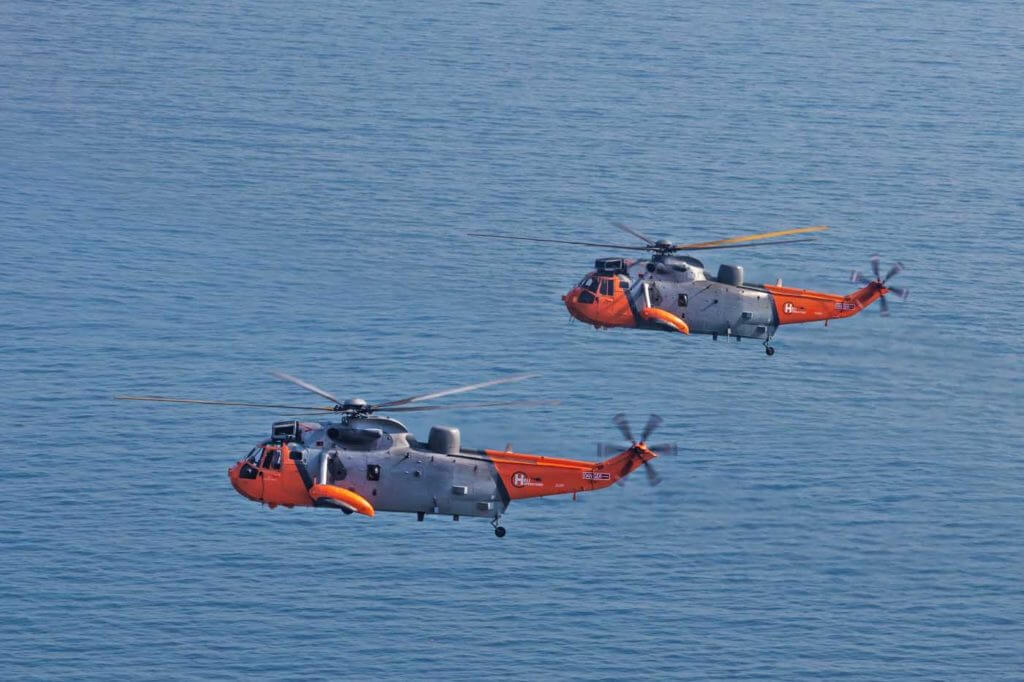
In HeliOps’ hangar is a red-and-gray Sea King formerly with 771 NAS, tail number XZ920. Under maintenance now, it will be the next machine to fly when one of the current flying aircraft goes down for its next periodic maintenance inspection. HeliOps generally tries to keep two aircraft serviceable in order to always have one to two flying.
“They can be offline [for maintenance] for three to five months and so we have to have one ready to jump back in,” Gladston said. “XZ920 is going to do so when ZA166, ‘Dara,’ goes into deep maintenance.”
More recently, HeliOps achieved approval from the U.K. Military Aviation Authority as a part 145 approved company, which means it satisfies the regulatory requirements for on-site maintenance of military registered air systems and components.
Importantly, HeliOps has its own continuing airworthiness management organization (CAMO). As Gladston proudly explained, “We provide all our own engineering, so the only thing Leonardo does for us at the moment is the design organization functions. All the data engineering decisions and repairs are all done by HeliOps.”
HeliOps also supports the three U.K. military services — Navy, Army, and Air Force — with refueling at Portland and has done the same for the U.S. Air Force, which operates a number of Bell Boeing CV-22B Ospreys from the 7th Special Operations Squadron, 352nd Special Operations Wing at RAF Mildenhall. Moreover, Gladston said, “we support the Coast Guard, as we did the other night when there was a search-and-rescue job on, for fuel including at night.”
Looking to the future, HeliOps is sure that its venerable Sea Kings still have plenty of life in them.
“We’re confident we’re basically going to be delivering German training through until probably 2023-24, before the German Sea King is replaced,” Gladston said. “So, they are our pride and joy and we love them, the wonderful old Sea Kings . . . and glorious machines they are, too!”





